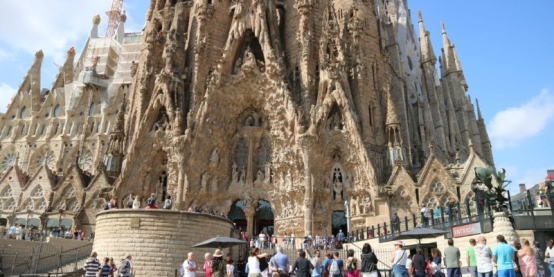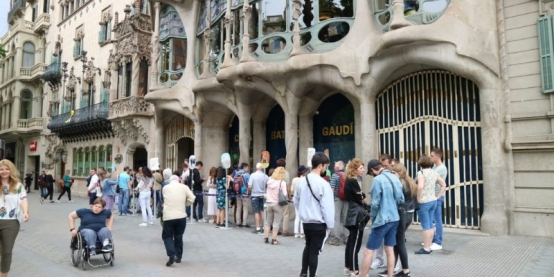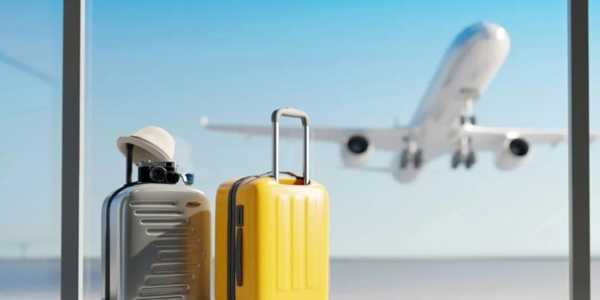Skip-The-Line Tickets: Are They Worth The Extra Cost?
When travellers plan their dream trips, one of the most common frustrations is long lines at famous attractions. Hours wasted in the scorching sun or cold drizzle can drain energy before the experience even begins. That's where skip-the-line tickets promise relief: pay extra, save time, and breeze past the waiting crowd.
But here's the big question: are skip-the-line tickets really worth the price tag, or just another clever way to squeeze money out of tourists? The truth isn't one-size-fits-all. For some, they're a golden ticket to stress-free travel. For others, they're an unnecessary splurge. This guide breaks it down step by step so travellers can make the smartest choice.
Table of Contents
What Are Skip-the-Line Tickets?
How Skip-the-Line Tickets Work
How Much Do They Cost Compared to Regular Tickets?
When Skip-the-Line Tickets Save the Most Time
The Downsides You Should Know
How to Decide if It’s Worth It for You
Alternatives to Paying for Skip-the-Line Tickets
Tips for Getting the Best Value from Fast Track Passes
Verdict: Are Skip-the-Line Tickets Worth It?
What Are Skip-the-Line Tickets?
Skip-the-line tickets grant expedited entry to attractions, allowing holders to avoid the main queues. Unlike standard tickets, which require waiting in general lines, these upgrades provide a separate route for faster access. They go by various names, including fast track passes, priority entry, express access, and queue-jumping options, depending on the venue.

These tickets appear at diverse locations worldwide. Theme parks like those operated by Disney and Universal Studios frequently offer them to manage high visitor volumes. Museums such as the Louvre in Paris or the Vatican Museums in Rome provide priority entry to handle crowds drawn to iconic artworks. Popular landmarks, including the Eiffel Tower and the Colosseum, also feature queue-jumping options.
Guided tours often incorporate fast-track passes as part of packages, ensuring groups move efficiently through sites. In essence, skip-the-line tickets cater to anyone seeking to maximise time at busy destinations. Real-life accounts from travellers on platforms like TripAdvisor highlight how these options transform visits, turning potential hours of waiting into seamless experiences.
The concept stems from crowd management strategies developed by attraction operators. For instance, priority entry systems help distribute visitor flow, preventing bottlenecks. Express access involves scanning a barcode at a dedicated gate, while queue-jumping options mean joining a shorter line monitored by staff.
How Skip-the-Line Tickets Work
Skip-the-line tickets operate through specialised systems designed for efficiency. At many venues, holders use dedicated entrances marked for fast-track passes or priority entry. These lanes lead directly to security checks or ticket validation, bypassing the bulk of the crowd.
Variations exist to suit different needs. Timed-entry tickets assign specific slots, allowing access at predetermined intervals to control flow. Unlimited express access, common in theme parks, permits repeated use throughout the day for multiple rides or exhibits.
Single-attraction skip-the-line tickets focus on one site, while multi-attraction passes cover several locations, like a city's top museums. Digital versions appear as QR codes on mobile apps, scanned at gates for convenience. Physical tickets, often wristbands or cards, require presentation to staff.
In practice, queue-jumping options involve virtual queuing apps that notify users when their turn arrives. For example, at the Eiffel Tower, priority entry holders ascend via a separate elevator line, shaving significant time off the visit.
These mechanics rely on technology and staffing to function smoothly. Attractions invest in apps and sensors to monitor lines, ensuring fast track passes deliver promised benefits. Visitor feedback from sites like TripAdvisor often praises the streamlined process, noting how express access enhances overall enjoyment.
How Much Do They Cost Compared to Regular Tickets?
Skip-the-line tickets typically command a premium over standard admissions. In theme parks, fast-track passes can add 50 to 100 per cent to the base price. For instance, a regular Disney park ticket might cost around $100, while priority entry upgrades range from $50 to $150 extra per person.
Museums often charge less dramatically. At the Louvre, a standard ticket is about €17, with skip-the-line tickets or express access options adding €10 to €20 through official channels or resellers. Guided tours incorporating queue-jumping options might total €50 to €100, including the base fee.
Percentage markups vary by location. Theme parks see 30 to 70 per cent increases for unlimited fast-track passes. Popular landmarks like the Vatican Museums add 20 to 50 per cent for priority entry. Seasonal factors influence costs; peak summer months inflate prices by 10 to 30 per cent compared to off-peak winter visits.
Consider a comparison at Universal Studios: a regular one-day ticket costs $109, while express access jumps to $179, a $70 markup. This pattern holds across attractions, where skip-the-line tickets reflect demand and operational expenses.
Data from travel aggregators shows average add-ons of $20 to $80 globally. Families report these costs multiplying quickly, yet many find the investment worthwhile during busy periods.

When Skip-the-Line Tickets Save the Most Time
Skip-the-line tickets prove most effective during high-traffic periods. Peak seasons, such as summer vacations or holidays, see queues stretching for hours at top sites. Fast track passes and priority entry become invaluable then, potentially saving two hours or more per attraction.
Attractions notorious for long waits benefit greatly from express access. Disney parks often have lines exceeding 90 minutes for popular rides; queue-jumping options reduce this to under 15 minutes. The Louvre and Vatican Museums report average waits of one to three hours without priority entry.
Families with children or elderly members appreciate the reduced physical strain. Skip-the-line tickets give you more energy for enjoying the experience rather than waiting. Travellers on tight schedules, like those with one-day layovers, rely on fast-track passes to fit in multiple sites.
Realistic savings depend on crowd levels. During weekends, express access might cut waits from 120 minutes to 30. Visitor logs from sites like the Eiffel Tower indicate peak-time reductions of up to 75 per cent with queue-jumping options.
Expert analyses from travel blogs emphasise these scenarios. For groups prioritising comfort, priority entry transforms stressful visits into relaxed explorations.
Peak Season Advantages
In summer, skip-the-line tickets shine at beaches and festivals. Fast track passes at events like Coachella or European music festivals prevent missing key performances.
Family and Accessibility Benefits
Parents note how priority entry eases navigation with strollers. Elderly visitors avoid fatigue, making express access a practical choice for inclusive travel.
Limited-Time Itineraries
Business travellers use queue-jumping options to squeeze in sightseeing. Data shows time savings averaging 45 minutes per site in urban hubs.
The Downsides You Should Know
Skip-the-line tickets carry notable drawbacks. The extra cost accumulates rapidly for groups; a family of four might pay $200 more for fast-track passes at a single park.
Not every option delivers a complete skip. Some priority entry lines still involve waits of 10 to 20 minutes during surges. Express access at theme parks often applies only to entrances, leaving internal ride queues unchanged.
Availability poses another issue. Queue-jumping options sell out quickly for high-demand dates, requiring planning. Visiting during low seasons risks overpaying for minimal benefits, as standard lines shorten naturally.
Financial analyses reveal that markups sometimes exceed value. For budget-conscious travellers, these add-ons strain wallets without proportional gains in off-peak times.
Visitor reviews highlight frustrations when fast-track passes underperform due to operational glitches, like understaffed lanes.
Cost Accumulation for Groups
Larger parties face multiplied expenses. Skip-the-line tickets for tours can add hundreds, prompting reevaluation of priorities.
Partial Skips and Limitations
Priority entry might shorten only initial queues. Express access exclusions for certain rides lead to unexpected waits.
Availability and Overpayment Risks
Sold-out scenarios force reliance on resellers at higher prices. Low-crowd visits make queue-jumping options unnecessary expenditures.
How to Decide if It’s Worth It for You
Evaluating skip-the-line tickets involves balancing personal factors. Budget plays a central role; if the markup strains finances, standard tickets suffice for less crowded times.
The time-versus-money equation guides many decisions. Saving two hours via fast track passes might justify $30 to $50 for those with packed itineraries. Travel style matters—rushed sightseers benefit more than leisurely explorers.
Group size amplifies impacts. Families weigh multiplied costs against collective comfort. A simple framework helps: if anticipated waits exceed one hour and the trip is brief, priority entry often pays off. Otherwise, alternatives might better suit.
Real experiences shared on forums underscore this. Business professionals opt for express access to maintain schedules, while solo backpackers skip queue-jumping options to save funds.
Budget Considerations
Assess total trip expenses. Skip-the-line tickets fit if they prevent missing flights or events.
Time-Money Trade-Off
Calculate the hourly value. For high earners, fast-track passes align with efficiency goals.
Travel Style and Group Dynamics
Leisurely groups tolerate waits. Larger parties take into account everyone's needs for priority entry.

Alternatives to Paying for Skip-the-Line Tickets
Strategic planning offers ways to avoid extra fees. Visiting attractions early in the morning catches shorter lines before crowds build. Late evenings work similarly, as many sites extend hours with reduced attendance.
Off-season travel minimises waits naturally. During the winter months, queues at European museums drop dramatically, eliminating the need for fast-track passes.
City passes, such as the Go City Explorer or Paris Museum Pass, bundle entries with built-in priority entry at no added cost. These provide value for multi-site visits.
Guided tours frequently include express access as standard, combining education with efficiency. Apps like those from Disney Parks display live queue times, aiding optimal timing.
Websites offering virtual tours or crowd predictors help plan around peaks, replicating queue-jumping options without expense.
Early or late visits leverage natural low points in attendance.
Off-season choices align with quieter periods for seamless access.
City passes integrate priority entry into affordable packages.
Guided tours embed express access in informative experiences.
Queue-monitoring apps enable data-driven decisions.
Tips for Getting the Best Value from Fast Track Passes
Purchasing skip-the-line tickets online ahead of time secures lower rates than on-site buys. Official websites often undercut third-party sellers for fast-track passes.
Comparing sources reveals deals; resellers like Viator might bundle priority entry with transport. Look for packages covering multiple attractions to spread costs.
Reading details ensures understanding—some express access allows unlimited use, others limit to one entry. Check policies on refunds, especially for weather-dependent sites.
Bundle options with meals or shows to enhance value. Visitor tips from authoritative sources emphasise verifying queue-jumping options against current crowd data.
Advance online buys prevent price hikes.
Source comparisons uncover bundles.
Fine-print reviews clarify access types.
Refund checks provide security.
Integration with other perks maximises returns.
Verdict: Are Skip-the-Line Tickets Worth It?
Skip-the-line tickets offer clear advantages in time savings and comfort, particularly when crowds peak or time is scarce. Fast track passes, priority entry, express access, and queue-jumping options streamline visits to busy attractions like theme parks and museums.
Pros include reduced physical strain and maximised itineraries. Cons centre on added costs and occasional incomplete skips. They suit those valuing efficiency over economy.
General guidance points to the worth in high-demand scenarios. For budget trips during quiet times, standard options prevail. Weighing circumstances ensures decisions align with goals.
Travellers benefit from informed choices on skip-the-line tickets. Resources like government tourism reports aid in planning. Ultimately, these upgrades enhance experiences when applied judiciously.
Summarising Pros and Cons
Time efficiency stands out as a pro. Cost remains the primary con, demanding careful assessment.
Applying the General Rule
Limited time and high crowds favour investment. Tight budgets and off-peak visits suggest skipping.
Getting the Most from Your Travel Choices
Reflecting on skip-the-line tickets highlights their role in modern travel. Fast track passes and priority entry cater to a wide range of needs, from families to solo adventurers. Express access and queue-jumping options continue evolving with technology.
Armed with this knowledge, readers can navigate options confidently. Prioritising personal priorities leads to rewarding journeys. Whether opting for upgrades or alternatives, informed planning elevates every trip.
Sources
Was this helpful? Share your thoughts
- Learned practical methods
- Solved my questions
- Inspired new ideas
-
![Best Wellness Retreats In The Us]() Best Wellness Retreats In The Us
Best Wellness Retreats In The Us -
In a world where daily demands often lead to exhaustion, wellness retreats offer a structured escape to recharge body and mind. These dedicated spaces combine relaxation, physical activity, and mental health practices, drawing more people each year. This guide explores the best wellness retreats in the US, providing detailed recommendations, costs, and tips to help readers select the ideal option for their needs.
Explore More





